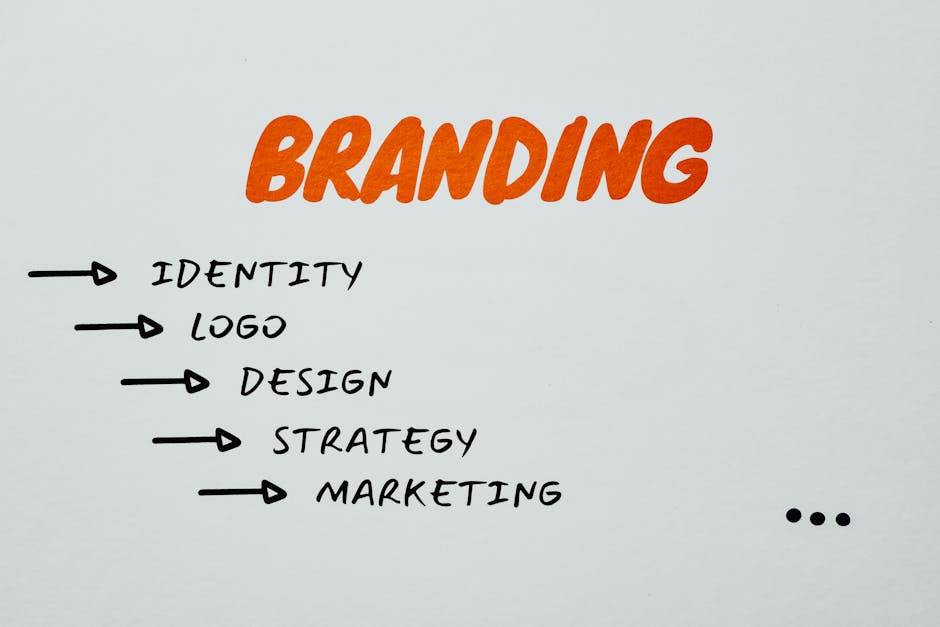Understanding Brand Evolution: Basics and Importance
Brand evolution is all about how a brand changes and adapts over time to meet new markets, technologies, and customer preferences. It’s like when your favorite candy brand changes its logo or comes out with a new flavor to keep things interesting. This isn’t just about tweaking your logo or tagline, though. True brand evolution touches every part of your business, from the products or services you offer to how you interact with your customers.
Why’s this so important? Well, imagine sticking to the same old methods while everything around you changes. You’d be left in the dust! For businesses, evolving their brand means staying relevant and competitive in a fast-paced world. It’s not just about surviving; it’s about thriving. Businesses that understand and embrace this concept can better connect with their audience, stand out from the competition, and drive growth.
So, wrapping it up, brand evolution is crucial for any business looking to grow and succeed over time. It’s not just changing for the sake of change but adapting with purpose and direction to meet the ever-changing needs of the market and your customers.
Historical Examples of Successful Brand Evolution
Big brands know that to stay on top doesn’t just mean being the best once; it’s about evolving. Coca-Cola, Apple, and McDonald’s are prime examples. Coca-Cola kicked off in 1886 selling a single product. Now, they’re a global phenomenon, constantly tweaking their branding to stay relevant. Then there’s Apple, which began as a computer company in a garage in 1976. Today, it’s a tech empire thanks to its innovative approach to product development and marketing. Finally, McDonald’s started as a simple drive-in restaurant in the 1940s. It transformed into a fast-food giant by continuously updating its menu and branding to match consumer tastes. These brands teach us that evolution isn’t just about change; it’s about strategic adjustments to keep the brand fresh and appealing.
Key Factors Driving Brand Evolution in Today’s Market
In today’s fast-paced market, brands don’t just grow; they evolve. This evolution is not random but driven by key factors that shape the journey of a brand from its inception to becoming a household name. Firstly, consumer behavior is a game-changer. As people’s tastes and preferences shift, so must the brand. It’s all about staying relevant and keeping up with what the market demands. Then, there’s technology. With every new app, device, or software update, the way we engage with brands changes. Brands that leverage the latest tech trends stay ahead. Competition can’t be ignored either. When new players enter the field, established brands must step up their game. This could mean refreshing their look, launching new products, or innovating their services. Lastly, social media is a powerhouse. It’s not just about ads but engaging with customers, creating communities, and humanizing the brand. Brands that master the art of online engagement often see the most growth. Each of these factors plays a pivotal role in the continuous evolution of a brand, shaping its path towards growth and success in today’s dynamic market.
The Impact of Brand Evolution on Business Growth
When a brand evolves, it directly impacts business growth. Think of your favorite brands. Over the years, they’ve likely changed their logos, messaging, or even the products and services they offer. This isn’t random; it’s a strategic move to stay relevant and appealing to consumers. As markets change and new trends emerge, brands that adapt quickly can outshine competitors stuck in the past. Brand evolution can lead to increased brand visibility, attracting new customers and retaining old ones. This is crucial for businesses aiming for long-term success. Moreover, evolving a brand can reposition a business in its market, enabling it to enter new markets or segments. This adaptability can significantly boost business growth, as it opens up new revenue streams and opportunities for innovation. In simple terms, the willingness to evolve can be the difference between thriving and merely surviving in today’s fast-paced market environment.
Strategies for Effective Brand Evolution
Brand evolution is crucial for staying relevant in the market. Start by listening to your customers. Their feedback highlights what’s working and what needs a tweak. Keep an eye on the competition too. They might unveil strategies you haven’t thought of yet. Next, refresh your brand’s look and message periodically. This doesn’t mean changing your logo every year but ensuring your brand’s image aligns with current trends and customer expectations. Innovation is key; introducing new products or features keeps your brand on the forefront of consumers’ minds. Lastly, invest in marketing. Use social media, SEO, and email campaigns to stay connected with your audience. Remember, evolving your brand is a continuous process, influenced by customer needs, market trends, and technology advancements.
Overcoming Challenges in Brand Evolution
Overcoming challenges in brand evolution isn’t just about staying relevant; it’s about making sure your business grows stronger with every change. First off, identity crisis is a huge hurdle. As your brand evolves, you might worry if customers will recognize the new you. It’s like showing up to a party in a completely different outfit. Will people know it’s you? The key is to maintain your core values while refreshing your look or approach. This is your brand’s soul that customers have connected with from the start.
Next, there’s the fear of alienating loyal customers. Imagine telling your regular coffee shop gang you’re switching your go-to order from a classic cappuccino to an oat milk latte with a hint of caramel. You worry, will they still sit with you? In brand terms, it means introducing new concepts without losing what made your customers love you in the first place.
Consistency is your best friend here. It’s not about making drastic changes overnight but gradually incorporating new elements that align with where your audience’s interests are heading. Think of it as adding sprinkles to a cake you know everyone already loves; you’re just making it more appealing.
Lastly, communication is crucial. You’re not just changing; you’re growing. Tell your story in a way that gets everyone excited about where you’re headed. It’s about sharing the journey with your customers, letting them know why changes are happening, and how it benefits them. This way, you’re not just evolving your brand in the dark; you’re taking everyone along for the ride.
The Role of Consumer Perception in Brand Evolution
Consumer perception shapes brand evolution profoundly. It’s how people view your brand that decides its positioning in the market. If the public sees your brand as innovative and reliable, you’re on the right track. But if they perceive it as outdated or untrustworthy, it’s a red flag. To stay ahead, businesses must continuously adapt to changing consumer needs and preferences. This means introducing new products, updating marketing strategies, and sometimes, rebranding entirely. A successful brand evolution focuses on staying relevant and appealing to its target audience. Remember, in the eyes of consumers, the value of your brand is directly linked to how well it meets their expectations and solves their problems. Keep your ear to the ground, listen to your customers, and evolve your brand to keep pace with their changing desires. Brands that master this aspect of consumer perception are the ones that grow, thrive, and lead in their markets.
Case Studies: Real-World Brand Evolution Success Stories
Brand evolution isn’t just a fancy business term; it’s a critical strategy for businesses aiming to stay relevant and grow. Take Apple, for example. Initially focusing on personal computers, it shifted gears towards mobile devices with the launch of the iPhone. This move not only revolutionized the smartphone industry but also catapulted Apple into becoming one of the most valuable companies in the world. Similarly, Netflix started as a DVD rental service. However, recognizing the potential of streaming, it pivoted to become a leading platform for on-demand video, fundamentally changing how we consume media. These brands didn’t just change their logos or marketing strategies—they evolved their entire business model to meet changing consumer demands, proving that adaptability is key to long-term success.
Measuring the Success of Your Brand Evolution Efforts
To figure out if your brand evolution is a win, keep an eye on a few key signposts. First up, sales numbers don’t lie. If you see a steady climb after a rebrand, you’re probably on the right track. Next, customer feedback is gold. Are people talking more about your brand? Do they dig the new look or message? That’s a thumbs up. Don’t forget about social media engagement. Shares, likes, and follows can tell you a lot about whether your brand’s new vibe is hitting the mark. Also, website traffic can give you a clue. An uptick in visits often means your brand’s getting more eye time. Lastly, peer recognition—like awards or mentions in industry roundups—shows you’re not the only one who thinks your brand’s glow-up is noteworthy. Keep tabs on these, and you’ll have a solid handle on how well your brand evolution is playing out.
Future Trends in Brand Evolution and Sustainability
Businesses now understand the importance of not just evolving with time but doing so sustainably. It’s not about quick wins anymore. The shift we’re seeing aims at long-term impact, setting sights on future generations. Key trends in this realm include the push for greener practices, transparency in operations, and genuine social responsibility. Brands that are riding this wave are not just redefining themselves for the now but are also laying robust foundations for future relevance and success. As consumers become more environmentally and socially aware, they’re throwing their weight behind businesses that resonate with these values. It’s clear: incorporating sustainable development and clear, honest communication into brand evolution isn’t just good practice—it’s emerging as a cornerstone for growth and consumer loyalty in the coming years.




